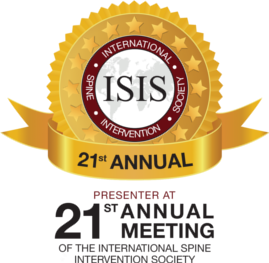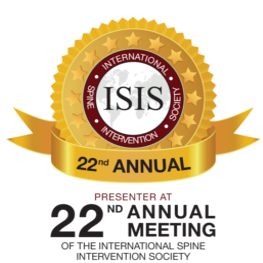There are two main options for treatment if your doctor recommends spine surgery. The main types are traditional spine surgery and minimally invasive spine surgery. Choosing between the two approaches can be difficult, but understanding their differences can help you make an informed decision. Both traditional spine surgery and minimally invasive spine surgery have advantages and disadvantages. Your doctor can help you decide based on your condition and overall health.
Traditional Spine Surgery
Also known as open back surgery, traditional spine surgery is a procedure used to treat different spinal problems. This procedure involves making a large opening in muscles and tissues to access the spine, allowing the surgeon to evaluate the affected part thoroughly. The following are the conditions that can be treated with traditional spine surgery:
- Fractured vertebrae
- Spinal tumors
- Spinal stenosis
- Herniated discs
A surgeon can work through large incisions, especially when handling complicated cases. Unfortunately, you will experience more discomfort after the procedure. It will also take more time for you to recover.
Minimally Invasive Spine Surgery
Surgeons typically make small incisions to access the spine during minimally invasive spine surgery. They use tiny instruments and cameras to carry out the procedure. Minimally invasive spine surgery is designed to minimize muscle and tissue damage around the spine. This procedure is advantageous in the following ways:
- Minimal scarring
- Faster recovery times
- Shorter hospital stay
- Less pain after the procedure
Examples of less invasive spine surgery include:
- Sciatica surgery
- Herniated disc surgery
- Bulging disc surgery
The Difference Between Traditional Spine Surgery And Minimally Invasive Surgery
The purpose of traditional and minimally invasive spine surgery is to improve quality of life, correct spinal issues, and relieve pain. However, the approach and recovery experience are different. These procedures also differ in the following ways:
Hospital Stay And Scarring
You will take more extended periods in the hospital after a traditional spine surgery because of the more invasive nature of the procedure. Recovery from traditional spine surgery may take several weeks to months, depending on the complexity and extent of the procedure. Larger incisions often leave you with a prominent scar that will be visible for a long time.
On the other hand, you will leave the hospital faster after a minimally invasive spine surgery. You will be allowed to go home within a day or two. Sometimes, the surgeon can carry out the surgery on an outpatient basis. The smaller incisions will heal faster, leaving you with smaller scars that cannot be noticed.
Risks And Complications
You can easily suffer infection after a traditional spine surgery because of a larger wound. You will lose more blood during the surgery, which can call for a blood transfusion sometimes. Traditional spine surgery can also cause pneumonia and blood clots because of prolonged periods of recovery. You also risk muscle atrophy if movement is restricted for a long time.
Minimally invasive spine surgery is deemed safer. There are fewer chances of suffering blood loss and infections because of smaller incisions. However, the surgeon’s expertise determines the procedure's success. It is also determined by the suitability of the approach to your condition.
Healing Period
Recovery after traditional spine surgery typically takes longer. Traditional spine surgery is also more intensive. It will take you weeks or months to resume your regular duties, depending on the complexity of the procedure. You often need physical therapy to rebuild flexibility and strength, especially in the back muscles affected during surgery.
You will leave the hospital within a day or two after a minimally invasive spine surgery and resume your regular duties after a few weeks. Less pain is experienced during this procedure because there is reduced trauma to the muscles and tissues around the spine. You will also require less pain medication after the procedure. The surgeon can still recommend physical therapy, which is often shorter and less intensive.
Surgical Technique
Traditional spine surgery involves making large incisions down the back. These incisions are usually a few inches long, allowing your surgeon to view and access the spine directly. Your surgeon will cut through more muscle and tissue during the procedure, causing trauma to the surrounding areas. This can cause discomfort after the procedure and a prolonged healing period.
On the other hand, minimally invasive spine surgery involves making small incisions through the muscles and tissues, usually an inch long. The surgeon will insert tiny instruments and cameras through the incisions. These tools are used to carry out the procedure without disturbing the muscles and tissues around the spine.
A Candidate For Traditional Spine Surgery And Minimally Invasive Spine Surgery
Several factors will determine the type of spine surgery you can undergo. Some of the factors include:
- Your general health
- The nature of your spinal condition, and
- The surgeon’s recommendations and expertise
Traditional spine surgery is ideal for patients with complicated or more serious spinal conditions. Your surgeon can recommend extensive spinal fusion if you have severe spinal deformities. Traditional spine surgery can also suit you if you have large sections of your spine that need to be corrected or stabilized.
Traditional spine surgery gives the surgeon direct access and a view of the spine. This procedure is the best in situations that require a comprehensive approach. Traditional spine surgery allows for more extensive procedures, though it often involves a longer healing period. Sometimes, this procedure is vital for achieving a permanent outcome.
Minimally invasive surgery is used to treat conditions like herniated discs or sciatica that require small-scale surgical intervention. These conditions are treated using minimally invasive herniated disk surgery or minimally invasive bulging disc surgery.
A minimally invasive procedure suits patients with spine problems requiring pressure relief. It is also the best for repairing spine sections while reducing disruption to surrounding tissues. This approach enhances faster healing and quicker return to normal activities. You will also experience less pain after the procedure.
Spinal Conditions Treated Using Minimally Invasive Spine Surgery
Some of the conditions treated using minimally invasive spine surgery include:
Spinal Tumors
Spinal tumors are growths that develop within the bones of the spine or in the spinal canal. Falling under intradural and extradural tumors, spinal cord tumors often develop on the covering of the spinal cord or within the spinal cord. A vertebral tumor is a tumor that affects the bones of the spine.
Spinal Infections
A spinal infection is an infectious disease that affects the intervertebral disk, vertebral body, or paraspinal tissue surrounding the vertebral body. You can develop spinal infections after surgery, or they can develop by themselves. The common symptoms of spinal infection include regular back pain.
Spondylolisthesis
Spondylolisthesis is characterized by a vertebra slipping forward onto the bone below it.
Vertebral Compression Fracture
A vertebral compression fracture can happen when the vertebral body within the spine collapses. This can result in loss of height, deformity, and severe pain. The fractures often occur in the thoracic spine, particularly in the lower part.
Spinal Stenosis
Spinal stenosis is a condition characterized by the narrowing of the spinal canal. This exerts pressure on the nerves that move through the spine. Spinal stenosis is common in the neck and lower back.
Scoliosis, Spinal Deformities
Abnormal spinal curves are the common symptom of scoliosis. The curves differ significantly in shape and size. Kyphosis and lordosis are the normal curvatures of the spine. This curvature occurs naturally at different regions or levels of the spinal column. Excessive kyphotic or lordotic curves are abnormal spinal curvatures that affect spinal alignment, flexibility, and balance.
Sciatica
Sciatica is a condition characterized by pain, which is felt along the path of the sciatic nerve. The sciatic nerve branches from the patient’s lower back through the buttocks, hips, and legs. You will experience this pain only on one side of the body. Sciatica occurs when a bone spur on the spine, a herniated disk, or a narrowing of the spine compresses a sciatic nerve. At this point, you will experience pain, inflammation, and often numbness in the affected leg.
Degenerative Disc Disease
Degenerative disc disease is a condition characterized by pain because of a damaged spinal disc. Many people have degenerative disc changes without symptoms; those who become symptomatic may develop pain over time. The degeneration process often begins as early as 20 years.
Herniated Disc
A herniated disc is characterized by a torn annulus fibrosus, or outer section of the vertebral disc. This will cause the inner section, or nucleus, of the vertebral disc to extrude, or herniate, through the fibers. The extruded nucleus can compress the nerves around the disc. You can experience pain in your back and sometimes the arms if the extrusion is in the cervical spine. The pain can also extend to your legs if the extrusion occurs in the lumbar spine.
Spinal Surgeries That Can Be Done Using A Minimally Invasive Approach
Some of the spinal procedures that can be carried out using a minimally invasive approach include:
Interspinous Spacer Placement
A spacer is an implant inserted between the interspinous processes within the lumbar spine. A surgeon can place the spacers during a surgery. The work of interspinous spacers is to enlarge the space between the processes and minimize spinal stenosis.
Spinal Cord Stimulation
Spinal cord stimulation is a procedure used to manage the pain in the spine. It involves placing an electrotherapeutic device in the epidural space outside the dura. During this surgery, a device is inserted that introduces low levels of electrical current to the dorsal part of the spinal cord. The primary purpose is to stop the sensation of pain. Spinal cord stimulators can be a system with an outside power source or a fully implanted system.
Discectomy And Microdiscectomy
Discectomy/microdiscectomy removes part (or rarely all) of the intervertebral disc to relieve nerve pressure. The only distinction between the two surgeries is that a microdiscectomy uses an operating microscope. The purpose of these surgeries is to eliminate herniated or ruptured discs.
Laminectomy
Surgeons often perform a laminectomy to eliminate the spinous process and lamina of the affected vertebra. This procedure is vital because it relieves pressure on the spinal nerve roots by creating sufficient room in the spinal canal. Laminectomy also reduces the symptoms of spinal stenosis.
Cervical Disc Replacement
The purpose of cervical disc replacement is to remove and replace a diseased cervical disc with a man-made or artificial device. The artificial disc can replace a disc in the cervical spine or lumbar spine.
Kyphoplasty
Surgeons often perform kyphoplasty to expand and stabilize compression fractures of the spine. During this procedure, a surgeon will use a small balloon to gently lift bone fragments into their correct position. The balloon will be inflated to create enough room, which the surgeon will later fill with special bone cement. Bone cement aims to create an internal cast that anchors the vertebra. The additional feature enables kyphoplasty to restore vertebral height and minimize spinal deformity. It also permits thicker cement with less risk of leaking and causing complications.
Spinal Fusion
Spinal fusion is a procedure used to permanently join two or more vertebrae in your spine, preventing motion between them. The technique used in spinal fusion mimics the normal healing process of broken bones. The surgeon will insert bone-like material in the space between two spinal vertebrae during this procedure. Your surgeon can also use rods, screws, and metal plates to hold the vertebrae together. This will enhance a solid healing unit.
Possible Risks And Complications Of A Spine Surgery
Spine surgeries are often vital and beneficial but have risks and complications. Understanding these risks will assist you in making sound decisions and being ready for them. Some of the complications include:
Implant And Fusion Complications
There are several complications associated with surgeries that involve implants and spinal fusion. Some of the complications include:
- Failure to achieve a successful fusion
- Breakage, and
- Implant migration
The above problems can cause pain and instability and may require revision surgery. The spinal fusion will only succeed depending on factors like bone health and adherence to postoperative instructions.
Bulging disc complications are also common. Your health status and the surgical site influence the success of the surgery. You can only avoid implant and fusion complications if you adhere to postoperative care instructions.
Persistent Weakness, Numbness, or Weakness
You can continue experiencing weakness, numbness, or pain despite a successful traditional spine surgery. This can be caused by scar tissue formation, nerve damage, or the underlying condition necessitating surgery. The regular symptoms require physical therapy or further medication. Spinal operation complications, like continuous numbness and pain, can significantly impact the quality of your life. Rehabilitation and pain management strategies can solve these problems.
Medical Complications
You are likely to experience medical complications after a traditional spine surgery. Some of the complications include:
- Stroke
- Heart attack
- Pulmonary embolism
- Deep Vein Thrombosis (DVT), and
- Other pre-existing medical conditions
The above risks can be minimized through preoperative assessments and postoperative care. Medical complications can also be addressed with a multidisciplinary approach. You should inform your doctor about your medical history if you have pre-existing conditions. Your current health status will help your surgeon offer appropriate surgical and postoperative plans.
Dural Tear
Dura mater is the outer membrane covering the spinal cord. A dural tear can cause leakage of cerebrospinal fluid. This can cause nausea, headache, and other symptoms. Traditional spine surgery can treat dural tears, but they can sometimes go undetected. If this happens, it can cause further complications and the need for another surgery.
Dural tears require complex spine procedures that can significantly impact your healing. You should seek treatment immediately if you experience signs of a dural tear.
Bleeding
Bleeding is common during a traditional spine surgery. You are likely to lose a lot of blood during a conventional spine surgery because of the proximity to major blood vessels. Surgeons often try to control bleeding, but most patients will still need a blood transfusion. You can also experience complications associated with blood loss. Other complications associated with bleeding include blood clots. This can result in pulmonary embolism or deep vein thrombosis (DVT). You require prompt treatment because of the severity of these conditions. Careful surgical techniques and preoperative assessments can address these conditions.
Infection
An infection can develop at the incision site or deeper within the spinal area after a spinal surgery. You can experience fever, pain, swelling, and redness. Sterilized techniques and antibiotics can address these conditions.
Preparing For A Minimally Invasive Or Traditional Spine Surgery
The preparation for minimally invasive spine surgery is more or less the same as that of traditional surgery. You will meet your surgeon for the initial consultation. The surgeon will perform an examination and imaging tests to plan for the surgery. The surgeon can give you some instructions before the surgery that can include:
- If you smoke, the surgeon can advise you to stop smoking for several days before the surgery
- Undergo additional tests like X-rays, magnetic resonance imaging (MRI), and computed tomography (CT scan)
- Your surgeon can advise you to engage in adequate exercises before the surgery to ensure that you are in shape and to shorten the recovery period.
- You can be instructed to stop taking certain medications before the surgery, especially blood thinners.
- Instructions on what to eat or drink on the night before the surgery
- Have someone to drive you to and from the hospital
Find Reliable Minimally Invasive Spine Surgery Services Near Me
Back pain can compromise your overall health and affect your daily life. Maybe you have scheduled numerous appointments with doctors and tried different treatments, but they have not worked. Minimally invasive spine surgery could be what you need. Many people are afraid of undergoing traditional spine surgery. The good news is that minimally invasive spine surgery is less intimidating than open back surgery, and the recovery period is shorter. For reliable, minimally invasive spine surgery services in Los Angeles, contact LAMIS. Call us today at 310-734-6088 to speak to one of our surgeons.






